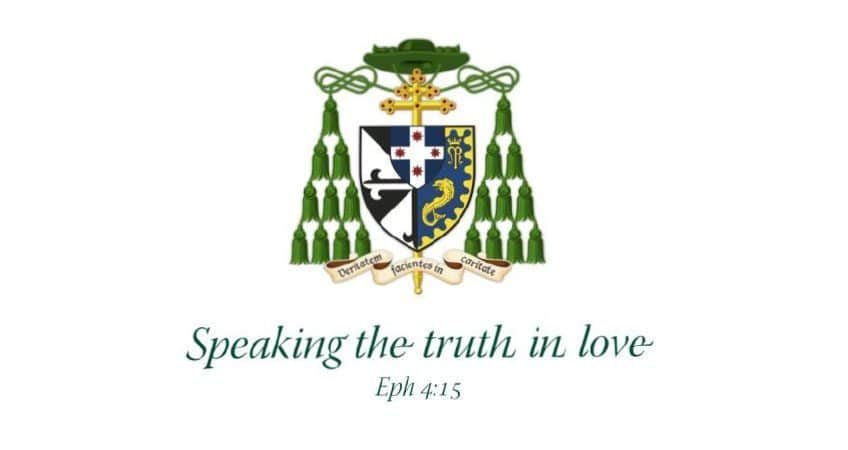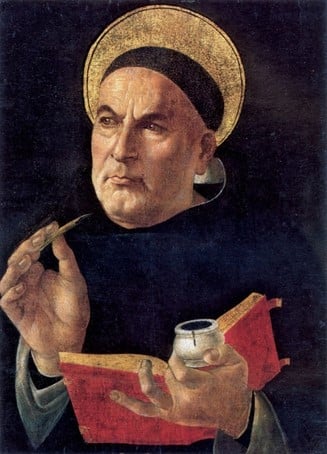Homily for Mass for 3rd Sunday in Lent Year A + Opening of Catholic Institute of Sydney Academic Year

St. Mary’s Cathedral, Sydney, 12 March 2023
The artificial intelligence chatbot ChatGPT was launched recently, breaking all records by reaching 100 million users in its first month. (By way of comparison: Google took a year to get that number of users, Instagram needed two, and Facebook only got there after four years![1]). As a result, the OpenAI company, which no one had heard of previously, is now valued at US$29 billion.[2] ChatGPT mimics human conversation and answers user questions. But it is versatile enough to write and debug computer programmes, solve equations, tutor students, fill in job applications, compose music, lyrics, poems and plays, write jokes and fairytales, generate student essays, research articles and abstracts… but no, I have not yet resorted to using AI to write my homilies! ChatGPT can answer follow-up questions, admit mistakes, challenge incorrect premises, and reject inappropriate requests. And it can all seem remarkably human. This tool may prove as useful and widespread as calculators and Google. Many predict AI will revolutionise entire industries and make humans redundant for many tasks. Elon Musk described ChatGPT as “scary good”[3] and only yesterday it was argued in the Daily Telegraph that those who master AI will have a decided advantage in the Australian jobs market going forward.
The technology is not without its downsides! Because ChatGPT enables students to outsource their essays to an app that is hard to detect and not plagiarising, educational institutions will face big problems in getting their students to do their own research and writing, and then to assess them.[4] And because it depends upon human-led hardware, programming, algorithms, data sets, and so on, it comes with various all-too-human confusions and prejudices. ChatGPT’s answers can be very plausible-sounding but wildly mistaken. Some commentators fear even more nefarious or apocalyptic effects of such technologies.[5]

Botticelli’s St Thomas Aquinas ca. 1481, Granger collection, New York
This is not an occasion to open up all the issues raised by Artificial Intelligence. Suffice it here to say that in Christian belief only God is pure spirit or intelligence, as Jesus says in today’s Gospel (Jn 4:24); the Son of God is the Logos, argument or communication of the Father; and human intelligence is at best a participation in that. In the tradition of Plato and Aristotle, Augustine and Boethius, Aquinas and so many since, the proper goal of human reason is ascertaining what is true and informing virtuous action. We don’t construct truth as a personal plaything, fashioned to our own liking. Though we have different perspectives and feelings, talk of “my truth” and “your truth” is misleading, and current fashion and ‘community standards’ are not its arbiters. Rather, truth is about recognising reality for what it is. Alongside goodness, beauty and unity, truth is something worthy of a lifetime’s attention and study.
Which might all sound rather highbrow and abstract—the sort of thing you’d hear at the Catholic Institute of Sydney or one of our Catholic universities. After all, the God of Moses, against whom the Israelites murmur in our first reading (Ex 17:3-7) is shown to be a very personal God of mercy and compassion; but He is also revealed to Moses in the burning bush as the very metaphysical “I am” or pure Being (Ex 3:14) and on Mount Horeb as the decidedly moral law-giver (Ex ch. 20 etc.).
Then in Christ the Teacher God reveals Himself further, as truth incarnate (Mk 12:14; Lk 20:21; Jn 1:1-17; 4:24; 14:6), “the Way, the Truth, and the Life” (Jn 14:17), the witness to the Truth (Jn 18:37), who came to consecrate and liberate His disciples in truth (Jn 8:32; 17:17). That His tutoring might continue after He had gone, Jesus promised to send us the Spirit of Truth (Jn 14:17; 15:26; 16:13). So God informs our intelligence with His, making His truth known by faith in His revealed Word (Holy Scripture), His will known in morals through the natural law (inscribed in our conscience), His very person known in Jesus (the God-man). Confronted with this truth, some were fascinated, persuaded, even compelled, others resistant, aggravated, repulsed. At the climax of Jesus’ Lenten journey to the cross, Pilate will famously ask “Truth? What’s that?” while staring directly at Truth Himself (Jn 18:38).
In our Gospel reading today, it’s a Samaritan Woman who meets truth face to face. Like Pilate she finds it deeply uncomfortable. The confrontation with truth can cause us to recoil in fear, but even when it fascinates and persuades us, it demands some re-orientation of our thinking, some change of our ways. Truth is transformative.
At first, the Woman is shocked that a Judaean would even speak to her, considering the long-standing feud between their peoples. But Jesus isn’t interested in preserving such divisions and discriminations. He comes for persuasion and reconciliation. So, He gradually reveals Himself. He is the very One who caused water to spring forth from rock the thirsty Israelites a millennium and a half before (Ex 17:3-7; Ps 94(95)). He is now offering her the life-giving waters of eternity. She doesn’t yet understand, but the patient Teacher continues.
He tells her the deepest truths about herself and her relationships, her needs and failings; about her people and their worship; about God and the future of humanity as “worshippers in spirit and in truth”. He gradually reveals Himself as Moses’ divine interlocutor. “I know the Messiah is coming,” she says, “and that He will teach us all truth”. “I who am speaking to you,” Jesus responds, “Yahweh. I am He.”
This encounter with Christ, with divine truth, turns the woman’s world upside down. She becomes a missionary disciple, a lay preacher. She brings others to the truth about Him and about themselves. These were not trivial truths, and they were certainly no invention of a chatbot. They were the deepest realities and most moving.
Institutions such as the Catholic Institute of Sydney are tasked with creating such opportunities for encounter with the truth, especially the highest and greatest of truths. There students will meet the God of Jacob and his well, of Moses and the burning bush, of thirsty Israel at Massah in the desert, of the Woman at the Well and of the new disciples. It’s not a wisdom we can manufacture, let alone outsource to a clever app. It takes heart and mind, applied long and hard, and a big dose of divine grace. But it offers students and faculty a rendezvous with the One who came that we might be consecrated in truth, have life in abundance, experience peace beyond all understanding, and have our deepest thirst quenched with the waters of life eternal.
[1] https://indianexpress.com/article/technology/chatgpt-100-million-users-8423362/
[2] Lakshmi Varanasi, “ChatGPT creator OpenAI is in talks to sell shares in a tender offer that would double the startup’s valuation to $29 billion,” Insider 5 January 2023.
[3] Kelsey Piper, “ChatGPT has given everyone a glimpse at AI’s astounding progress,” Vox 15 December 2022.
[4] https://www.theaustralian.com.au/business/technology/could-a-chatbot-write-this-article/news-story/3be6cfdc46cb0fc9ee1cef8ecba8caa6
[5] https://www.telegraph.co.uk/business/2023/02/17/chatgpt-reflect-users-political-beliefs-criticism-left-wing/
Introduction to Mass for 3rd Sunday in Lent Year A + Opening of Catholic Institute of Sydney Academic Year
St. Mary’s Cathedral, Sydney, 12 March 2023
Welcome to St Mary’s Cathedral for our Solemn Mass for the Third Sunday of Lent. During this penitential season, we continue to pray earnestly, fast humbly and give generously as we journey with Christ to Easter.
Today we also mark the opening of the 2023 Academic Year for the Catholic Institute of Sydney. Concelebrating with me are several members of the Institute’s senate or faculty: Auxiliary Bishop Richard Umbers and several brother priests. Also concelebrating are Fr Michael De Stoop, Rector of the Seminary of the Good Shepherd, with members of his formation team concelebrating and seminarians serving; Fr Marlon Henao Perez, Vice Rector of the Redemptoris Mater Seminary; and Fr Bradley Rafter, Vice-Rector of Vianney College Seminary, Wagga Wagga.
I acknowledge the presence today of the President of the Institute, Prof. Sr. Isabell Naumann ISSM; the Deputy President and Academic Dean, Prof. Rohan Curnow; along with senators, faculty, staff and students.
I also recognise from our partner institution, the University of Notre Dame Australia, Vice-Chancellor Prof. Francis Campbell, and National Head of the School of Philosophy and Theology, Prof. Renee Kohler-Ryan. I also recognise friends from other Catholic tertiary institutions, including Prof. Zlatko Skrbis, Vice Chancellor of the Australian Catholic University and Prof. Hayden Ramsay, Deputy Vice-Chancellor of ACU and Senator of the Catholic Institute.
To everyone present, including visitors and more regulars, a very warm welcome to you all.

